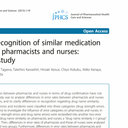Role of oxidative stress in vinorelbine-induced vascular endothelial cell injury.
Sleutelwoorden
Abstract
Vinorelbine (VNR), a vinca alkaloid anticancer drug, often causes vascular injury such as venous irritation, vascular pain, phlebitis, and necrotizing vasculitis. The purpose of this study was to identify the mechanisms that mediate the cell injury induced by VNR in porcine aorta endothelial cells (PAECs). PAECs were exposed to VNR for 10 min followed by further incubation in serum-free medium without VNR. The exposure to VNR (0.3-30 microM) decreased the cell viability concentration and time dependently. The incidence of apoptotic cells significantly increased at 12 h after transient exposure to VNR. At the same time, VNR increased the activity of caspases. Interestingly, VNR rapidly depleted intracellular glutathione (GSH) and increased intracellular reactive oxygen species (ROS) production. Moreover, VNR depolarized the mitochondrial membrane potential and decreased cellular ATP levels. These VNR-induced cell abnormalities were almost completely inhibited by GSH and N-acetylcysteine. On the other hand, L-buthionine-(S,R)-sulfoximine, a specific inhibitor of GSH synthesis, aggravated the VNR-induced loss of cell viability. These results clearly demonstrate that VNR induces oxidative stress by depleting intracellular GSH and increasing ROS production in PAECs, and oxidative stress plays an important role in the VNR-induced cell injury.


